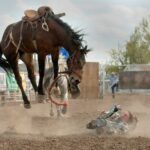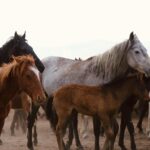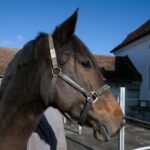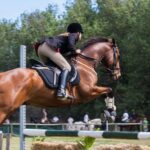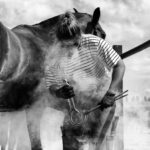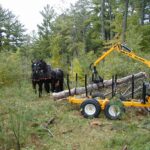Horses have been our companions throughout history, serving as working animals, athletic partners, and beloved pets. With over 300 breeds worldwide, each developed for specific purposes and environments, identifying different horse breeds can seem daunting to novice equestrians. However, understanding the distinct physical characteristics that define various breeds not only enhances your equine knowledge but also deepens your appreciation for these magnificent animals. From the towering draft horses bred for strength to the elegant Arabians prized for endurance, each breed carries telltale traits that reveal its heritage and purpose. This guide will walk you through the key physical characteristics that help distinguish one horse breed from another, turning what might seem like an overwhelming variety into a fascinating study of equine diversity.
Overall Body Size and Height

Size is one of the most immediately noticeable distinguishing factors between horse breeds. Draft breeds like the Shire, Clydesdale, and Percheron typically stand 16-19 hands high (64-76 inches at the shoulder) and can weigh between 1,500-2,400 pounds, making them true gentle giants of the equine world. In stark contrast, miniature horses measure under 38 inches at the withers when fully grown, appearing almost toy-like next to their massive draft counterparts. Medium-sized riding horses such as Quarter Horses, Morgans, and Thoroughbreds generally range from 14.2-16.2 hands (about 58-66 inches). When assessing a horse’s breed, taking note of its overall size provides an immediate narrowing of possibilities and serves as the first step in identification.
Head Shape and Profile

The head is perhaps the most breed-specific part of a horse’s anatomy, with profiles ranging from straight to distinctly concave or convex. Arabian horses showcase a distinctly dished (concave) facial profile, large expressive eyes, and small muzzles—features that make them immediately recognizable even to casual observers. Draft breeds like the Suffolk Punch typically display a more Roman nose with a convex profile, while the Quarter Horse presents a straight profile with a broad forehead and relatively small ears. Thoroughbreds generally have a long, fine head with a straight profile, though slight variations exist within the breed. These facial characteristics were developed over centuries of selective breeding and often reflect the breed’s original purpose and geographical origin.
Coat Colors and Patterns
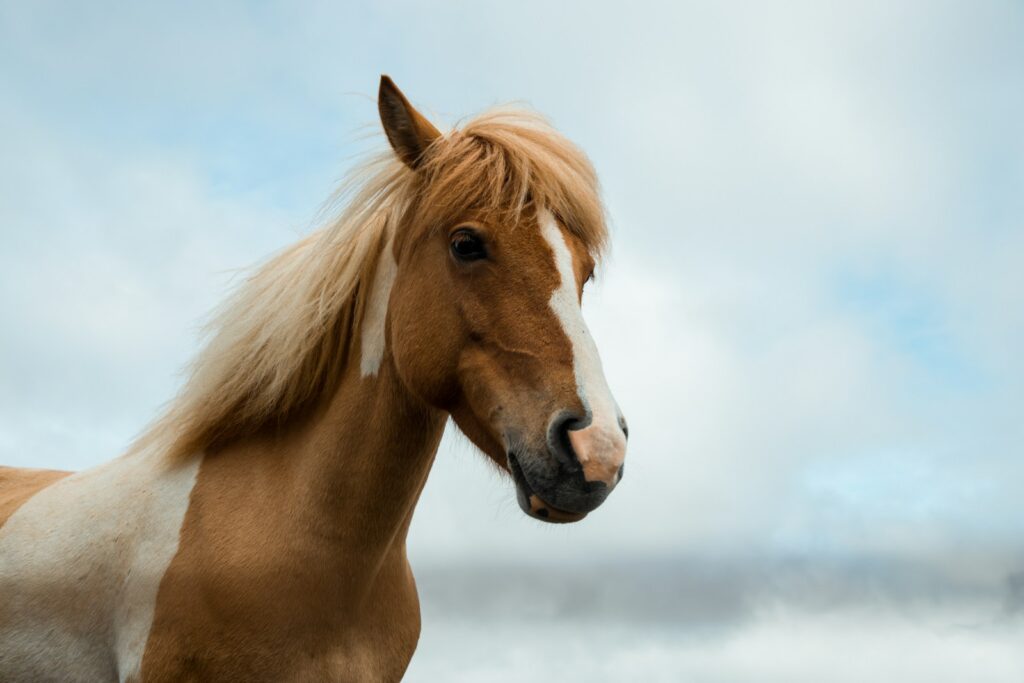
While coat color alone isn’t usually enough to identify a breed, certain colors and patterns are strongly associated with specific breeds. The Friesian horse is known for its uniformly black coat, flowing mane, and feathering on the legs, creating a dramatic appearance that’s almost unmistakable. Appaloosas are famous for their spotted coats, which can display patterns including leopard (white with colored spots), blanket (white over the hindquarters with spots), or snowflake (white spots on a dark background). Palominos, while not a breed themselves but a color, feature a golden coat with white mane and tail and are particularly common in certain breeds like the American Saddlebred and Quarter Horse. Some breeds, such as the Gypsy Vanner, often display dramatic piebald (black and white) or skewbald (any color other than black, with white) patterns that contribute significantly to their distinctive appearance.
Leg Length and Bone Structure
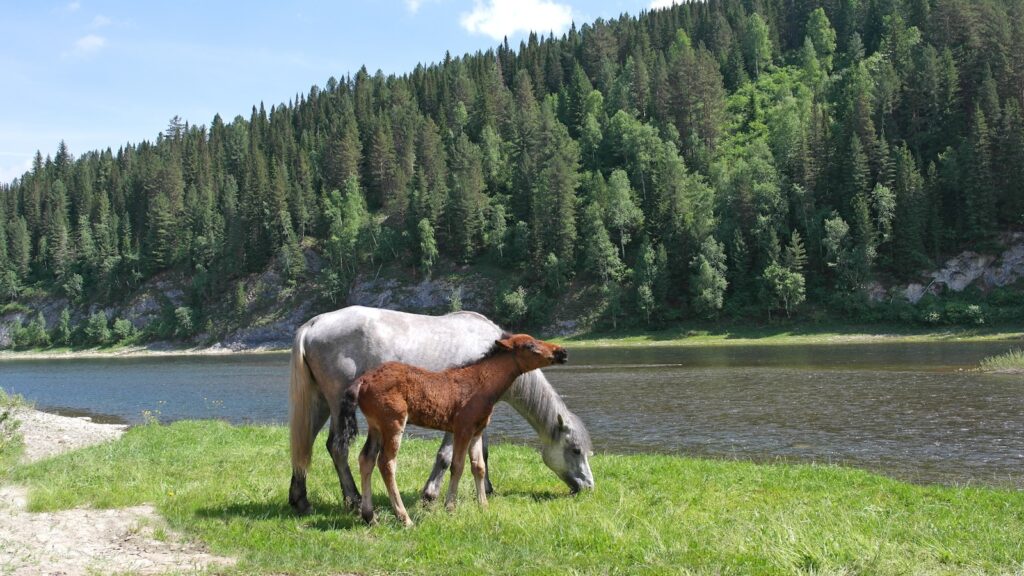
The proportions and bone structure of a horse’s legs offer important clues to its breed identity. Thoroughbreds and other racing breeds typically have long, slender legs with refined bone structure, allowing for maximum stride length and speed on the racetrack. In contrast, draft breeds display thick, sturdy legs with substantial bone and often feature “feathering” (long hair on the lower legs), particularly in breeds like the Clydesdale, which is famous for its dramatic white feathering. Mountain breeds such as the Haflinger often have shorter, thicker legs proportional to their bodies, providing stability on uneven terrain. Examining not just the length but also the circumference of the cannon bone (between knee and fetlock) can provide valuable insights—draft breeds may have a 9-10 inch circumference compared to 7-8 inches for a typical riding horse.
Mane and Tail Characteristics

The texture, length, and volume of a horse’s mane and tail vary significantly between breeds and can be key identifying features. Andalusians and Lusitanos are renowned for their thick, flowing manes and tails that add to their majestic appearance and reflect their Iberian heritage. Conversely, many primitive breeds like the Przewalski’s horse display short, bristly manes that stand upright rather than falling to one side. The Norwegian Fjord horse is immediately recognizable by its distinctive crested mane, which is traditionally cut short so it stands upright, with the dark center hair creating a striking contrast against the lighter outer hair. Some breeds, such as Morgans, are known for naturally thick, wavy tails that can reach nearly to the ground, while others, like certain stock horse breeds, typically have straighter, less abundant tail hair.
Muscling and Body Type
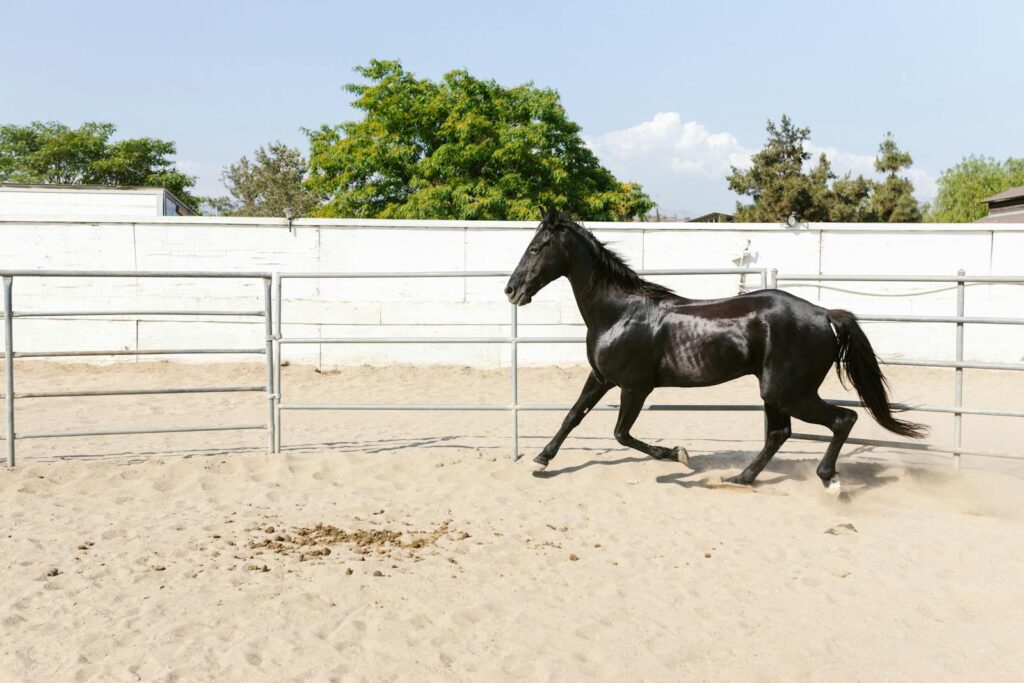
The distribution and type of muscling on a horse’s body provides significant clues to its breed and original purpose. Quarter Horses display distinctive muscular hindquarters that gave the breed its name—powerful muscles that enable explosive acceleration for quarter-mile races. Thoroughbreds exhibit leaner muscling distributed across a longer frame, optimized for distance racing rather than sprinting. Draft breeds show massive muscling across their bodies, particularly through the shoulder and hindquarters, reflecting centuries of breeding for pulling power. Gaited breeds like the Tennessee Walking Horse often display more refined muscling with a particular development in areas that support their specialized gaits. The way muscle is distributed—whether heavily concentrated in certain areas or more evenly spread—often indicates whether the breed was developed for speed, endurance, strength, or specific riding disciplines.
Neck Shape and Length

A horse’s neck varies considerably between breeds in both length and shape, offering another diagnostic feature. Arabians typically display a gracefully arched neck that sets on high at the withers, creating their characteristic proud carriage that evolved for desert environments where alertness was critical. In contrast, draft breeds often have shorter, thicker necks with a more pronounced crest, providing the power needed for pulling heavy loads. Spanish breeds like the Andalusian showcase a notably arched, substantial neck that contributes to their ability to perform collected movements. The modern Warmblood sport horse generally presents a long, elegant neck that facilitates extension in dressage movements. The junction of the neck with both the head and the body—how smoothly it transitions or how abruptly it changes—can also provide valuable breed identification clues.
Back Length and Topline

The length and structure of a horse’s back varies significantly between breeds and reflects their intended use. Arabian horses typically have only five lumbar vertebrae instead of the usual six, resulting in a noticeably shorter back that contributed to their legendary endurance capabilities. Draft breeds often display shorter backs relative to their overall size, providing the strength needed for pulling heavy loads. Thoroughbreds and other racing breeds generally have longer backs that allow for greater stride length and speed. The shape of the topline—whether it rises slightly at the withers and croup with a dip in between, or presents a more level profile—also varies by breed. Morgans, for instance, are known for their compact, level toplines, while some gaited breeds may show a more pronounced slope from withers to croup.
Hoof Size and Shape
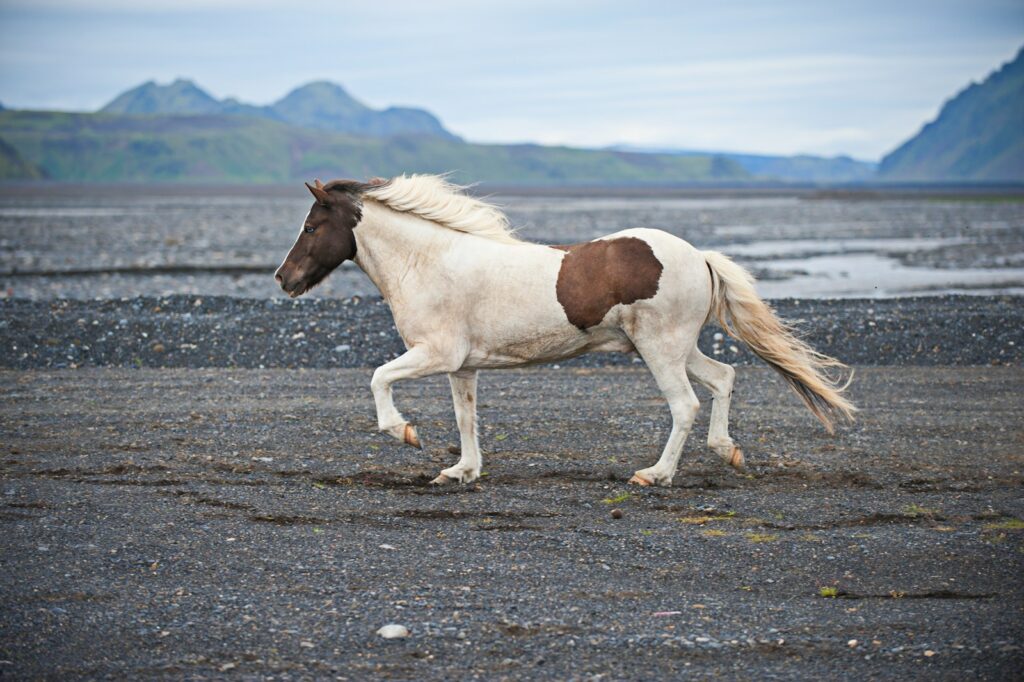
Hooves provide surprising insights into breed identification, varying considerably in size, shape, and composition. Draft breeds developed in wet, marshy environments, like the Shire and Clydesdale, typically have larger, flatter hooves that prevent them from sinking into soft ground. Desert breeds such as the Arabian and Akhal-Teke often have smaller, harder, more upright hooves adapted to firm, rocky terrain. The color of the hoof can sometimes provide clues as well—horses with extensive white leg markings typically have lighter-colored hooves in those areas, while solid-colored legs usually have darker hooves. The angle of the hoof-pastern axis and the overall proportion of the hoof to the horse’s size can also vary between breeds, with some showing more upright pasterns and others displaying more angle.
Breed-Specific Gaits

While not strictly a physical trait, the way a horse moves is deeply connected to its physical structure and can be instrumental in breed identification. Gaited breeds like the Tennessee Walking Horse, Missouri Fox Trotter, and Icelandic Horse perform distinctive gaits beyond the standard walk, trot, and canter. The Tennessee Walking Horse’s running walk, the Fox Trotter’s fox trot, and the Icelandic Horse’s tölt are breed-specific movements resulting from particular conformational characteristics. Even among non-gaited breeds, movement patterns vary noticeably—Thoroughbreds typically have a longer, reaching stride, while Quarter Horses often display a shorter, quicker stride. Friesians exhibit high, dramatic knee action, while Arabians often move with a floating quality and naturally elevated tail carriage. These movement patterns are directly related to physical conformation and can be observed even when the horse is simply walking.
Facial Features and Markings

Beyond the overall head shape, specific facial features and markings can provide important breed identification clues. The Akhal-Teke displays distinctive “hooded” eyes with an almond shape and pronounced brow ridges that give them an alert, exotic appearance. Appaloosas often show mottled skin around their muzzle, eyes, and genitalia, along with distinctively striped hooves and visible sclera (white around the iris of the eye). While white facial markings like stars, stripes, and blazes occur across many breeds, certain patterns appear more frequently in specific breeds. For example, Draft breeds like the Clydesdale commonly display broad white blazes extending to the muzzle, while Arabian breeders historically selected for minimal white markings. The placement, shape, and size of a horse’s ears—whether small and curved inward like an Arabian’s or larger and more outward-facing like many warmblood breeds—also contributes to breed identification.
Historical Context and Geographical Origins
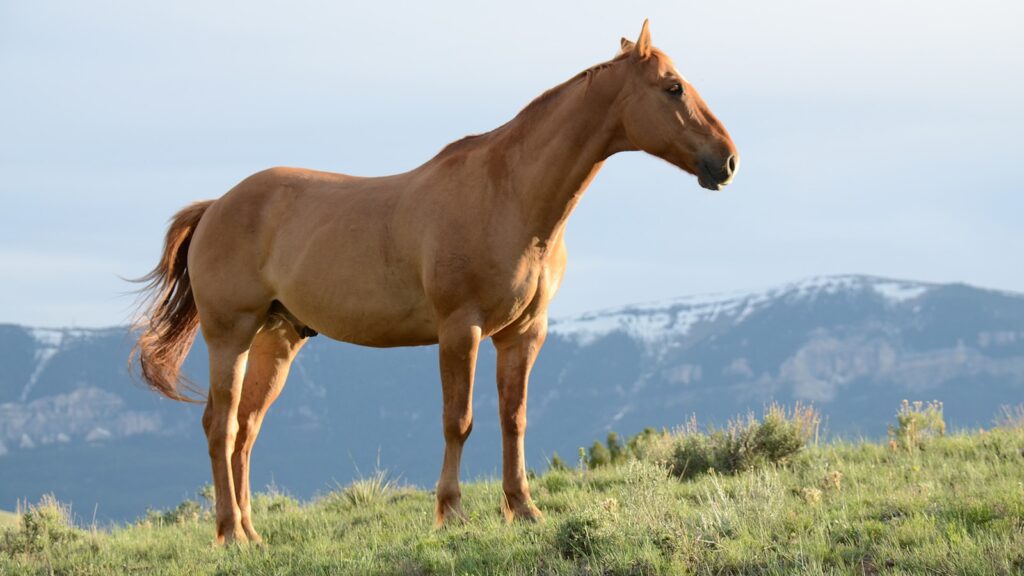
Understanding a breed’s historical development often provides context for identifying its physical characteristics. Breeds developed in harsh desert environments, like the Arabian and Akhal-Teke, typically display efficient cooling features including fine skin, minimal fat deposits, and prominent blood vessels. Cold-weather breeds such as the Icelandic Horse and Norwegian Fjord developed thick, double-layered coats, stocky builds, and efficient metabolism to survive in harsh northern climates. Island breeds like the Shetland Pony evolved to be small and hardy due to limited resources and harsh conditions. Mountain breeds typically developed sure-footedness, compact bodies, and strong hooves for navigating rocky terrain. Recognizing these environmental adaptations can help narrow down possible breed identifications, especially when combined with other physical characteristics.
Putting It All Together: Practice Makes Perfect
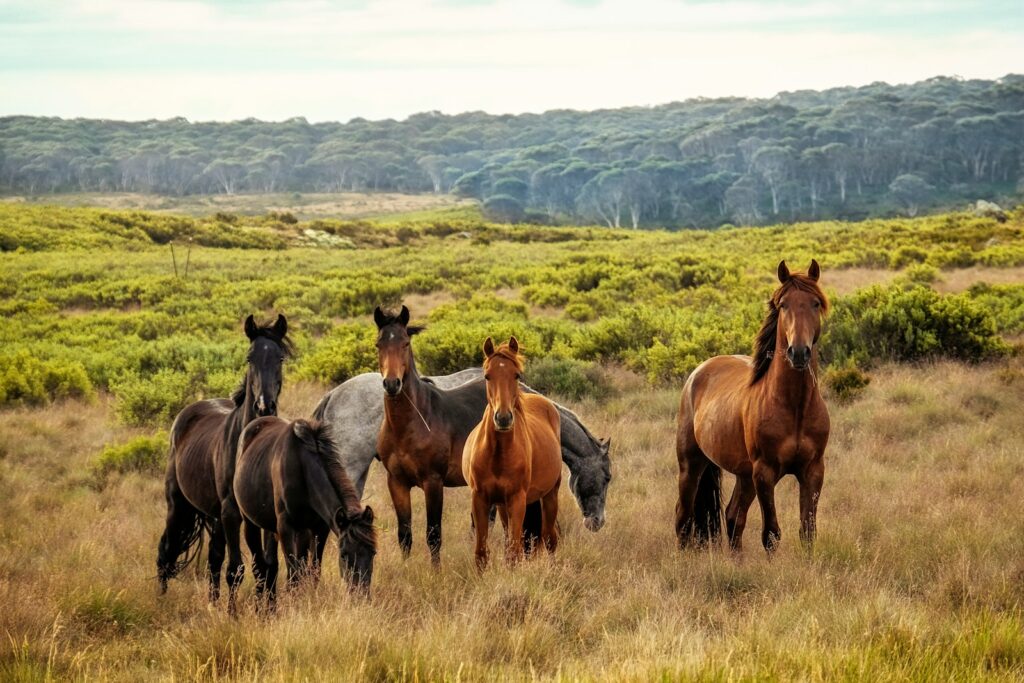
Becoming proficient at horse breed identification requires both knowledge and practice—spending time observing different breeds in person whenever possible. Begin by studying breeds with highly distinctive characteristics, such as the black Friesian with its abundant feathering or the spotted Appaloosa with its mottled skin. Progress to identifying more subtly different breeds like various warmblood types, which may require closer attention to nuances of conformation and movement. Attend horse shows, particularly breed showcases, where you can observe multiple examples of the same breed to understand both the consistent traits and the range of variation within breed standards. Create a mental checklist of characteristics to assess: height, body type, head profile, coat color and pattern, leg features, and movement style. With practice, what begins as a conscious analysis process will become more intuitive, allowing you to recognize breeds at a glance.
Conclusion
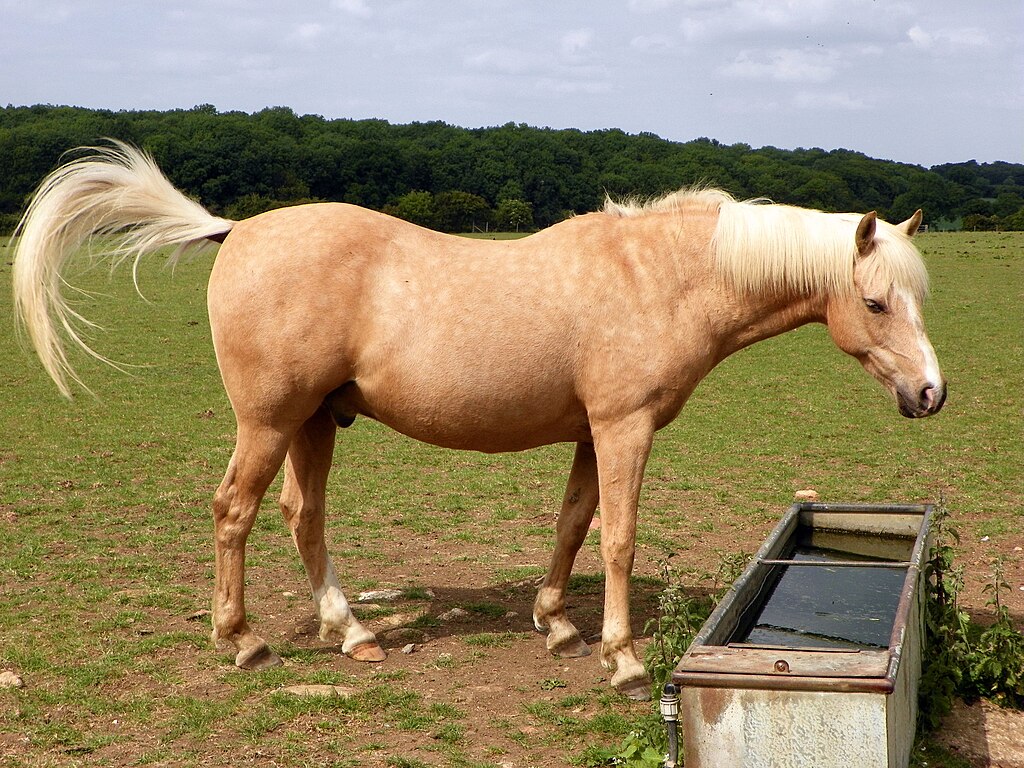
The fascinating world of horse breeds offers a window into both human history and the remarkable adaptability of these magnificent animals. From the desert-bred Arabian to the powerful draft horses of Europe, each breed carries physical traits that tell the story of its development and purpose. By learning to recognize the distinctive characteristics that define different breeds—from overall size and body structure to subtle details of facial features and movement patterns—you gain a deeper appreciation for the incredible diversity within the equine species. Whether you’re a casual admirer of horses or deeply involved in the equestrian world, the ability to identify different breeds enriches your understanding and enjoyment of these extraordinary animals that have been humanity’s partners throughout civilization.


